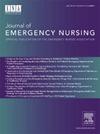Outpatient Follow-Up After Rural Emergency Department Discharge: A Quality Improvement Initiative
IF 2.3
4区 医学
Q2 EMERGENCY MEDICINE
引用次数: 0
Abstract
Introduction
Patients residing in rural communities experience a gap in health care access, leading to increased emergency department usage and returns. Outpatient follow-up with primary care providers or specialists is instrumental in transitioning from the emergency department to home. Evidence supports the use of post-discharge phone calls to increase adherence with follow-up outpatient appointments and potentially reduce negative sequelae for health care systems and patients.
Methods
This quality improvement project used a convenience sample of patients aged 18 years and older presenting to a critical-access rural emergency department and discharged home with recommended outpatient follow-up. Two scripted post-discharge phone calls were conducted: initial contact within 72 hours of discharge and second contact between 7 and 10 days after discharge. Resources were provided during phone calls if barriers to timely follow-up were identified.
Results
Implementation of post-discharge phone calls significantly increased outpatient follow-up but had no impact on unplanned emergency department revisits.
Discussion
Post-discharge phone calls addressed potential barriers and effectively increased outpatient follow-up. Implementation of post-emergency department discharge phone calls is recommended to improve primary care or specialist follow-up. Continued tracking of follow-up appointments and emergency department revisits are required.
农村急诊科出院后的门诊随访:质量改进倡议。
简介:居住在农村社区的患者在获得医疗保健方面存在差距,导致急诊使用率和回报增加。与初级保健提供者或专家的门诊随访有助于从急诊科过渡到家庭。有证据支持使用出院后电话来增加随访门诊预约的依从性,并可能减少卫生保健系统和患者的负面后遗症。方法:本质量改进项目采用便利样本,选取18岁及以上在农村急诊科就诊并经推荐门诊随访出院的患者。出院后进行两次书面电话:出院后72小时内首次联系,出院后7 - 10天第二次联系。如果发现妨碍及时采取后续行动的障碍,则在电话期间提供资源。结果:出院后电话的实施显著增加了门诊随访,但对计划外急诊科就诊没有影响。讨论:出院后电话解决了潜在的障碍,有效地增加了门诊随访。建议实施急诊后出院电话,以改善初级保健或专科随访。需要继续跟踪后续预约和急诊复诊。
本文章由计算机程序翻译,如有差异,请以英文原文为准。
求助全文
约1分钟内获得全文
求助全文
来源期刊
CiteScore
3.10
自引率
11.80%
发文量
132
审稿时长
46 days
期刊介绍:
The Journal of Emergency Nursing, the official journal of the Emergency Nurses Association (ENA), is committed to the dissemination of high quality, peer-reviewed manuscripts relevant to all areas of emergency nursing practice across the lifespan. Journal content includes clinical topics, integrative or systematic literature reviews, research, and practice improvement initiatives that provide emergency nurses globally with implications for translation of new knowledge into practice.
The Journal also includes focused sections such as case studies, pharmacology/toxicology, injury prevention, trauma, triage, quality and safety, pediatrics and geriatrics.
The Journal aims to mirror the goal of ENA to promote: community, governance and leadership, knowledge, quality and safety, and advocacy.

 求助内容:
求助内容: 应助结果提醒方式:
应助结果提醒方式:


